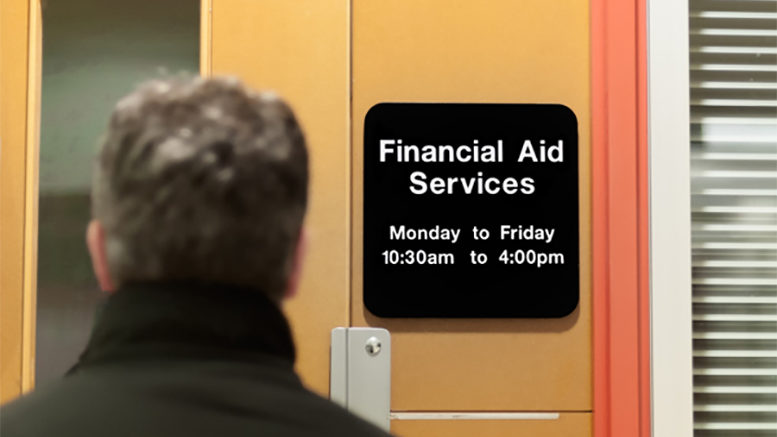Both federal and state governments have a role to play in assuring better, more equitable postsecondary outcomes for our low-income students. The Debt-Free College Act of 2018 is distinctive for its proposal to establish a long-term plan to do so, while paying particular attention to the financial needs of low-income students and students of color.
The bill, introduced last week by Sen. Brian Schatz (D-Hawaii), would create a federal-state partnership to address the unmet need of low-income college students.
This article comes from the Center for Law and Social Policy’s (CLASP) blog. It is reprinted with permission.
Federal funds would eliminate the unmet need of Pell Grant recipients at in-state institutions. Any leftover funds would be used to reduce or eliminate the unmet need of the remaining in-state students, prioritized by need. The amount of each state’s federal award would be a one-to-one match with the state’s financial support to its public institutions.
A small portion of the federal funds would be set aside for institutions’ college completion programs, capacity building and higher education investment, and program administration. With this funding, colleges would have resources designated to hire advisors and counselors, increase their academic and/or student supports, create microgrants for emergency needs, or develop new programs to align with workforce needs. These federal funds could be of particular benefit to lower-resourced institutions like community colleges that lack the funding to provide additional services to students or undertake new initiatives focused on students and college completion (e.g., to improve results in an outcomes-based funding formula).
Requirements, benefits
The Debt-Free College Act includes minimal eligibility requirements: students must be enrolled at an in-state public institution, complete the FAFSA, and maintain satisfactory academic progress. States are prohibited from creating additional requirements. This pushes against the recent, troubling trend of some state “free college” programs requiring students to enroll full-time, pass a drug test, and/or live in-state after graduation.
The act’s debt-free guarantee considers all costs of attendance, not just tuition and fees. CLASP previously quantified the large, unmet financial need of low-income students, especially among students of color. Unmet need, which measures student resource shortfalls beyond the price of tuition and fees, can lead to students reducing their enrollment, increasing their hours at work, or going (further) into student loan debt. It’s also a significant contributor to the issue of basic needs insecurity among college students.
Understandably, some student populations, like Dreamers, have unmet need because they are purposely excluded from receiving aid. This bill would remedy that by giving Dreamers access to federal aid. It also restores aid eligibility for students with prior non-violent drug offenses. Access to aid would be a significant support for each of these populations, which CLASP has promoted in our Higher Education Act reauthorization priorities.
The act also includes important benefits for tribal colleges and universities, private non-profit historically black colleges and universities, and select private non-profit minority-serving institutions. It explicitly grants funds to reduce low-income students’ cost of attendance at these institutions and allows them to continue serving large proportions of low-income students and provides additional resources to do that well.
CLASP is proud to endorse the Debt-Free College Act, which shows that providing a debt-free college education is an achievable possibility for states, particularly when partnering with the federal government. We thank Sen. Schatz and his co-sponsors for their important leadership.

